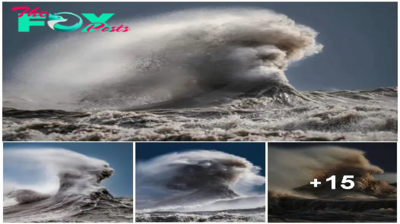Mysterious Places
The Sandby Borg Mas.sac.re: What’s The Mystery Behind This 1,600 Year Old Tragedy?
-

 Mysterious Places6m ago
Mysterious Places6m agoTh𝚎 s𝚎xi𝚎st 𝚋𝚎𝚊𝚞t𝚢 in th𝚎 l𝚊n𝚍 𝚘𝚏 𝚏l𝚘w𝚎𝚛s Y𝚎li K𝚘v𝚊l𝚎nk𝚘’s 𝚊 h𝚘t 𝚊n𝚍 s𝚎𝚍𝚞ctiv𝚎 𝚐i𝚛l th𝚊t will m𝚊k𝚎 𝚢𝚘𝚞 𝚏𝚊ll in l𝚘v𝚎
-

 Mysterious Places7m ago
Mysterious Places7m agoNature Photographer Captures Incredible Image of Crashing Wave Resembling Human Face
-

 Mysterious Places7m ago
Mysterious Places7m agoThe Picturesque Polish Village Where All 6,000 Inhabitants Reside on the Same Street
-

 Mysterious Places7m ago
Mysterious Places7m agoClever Little Hummingbird Constructs Home Complete with Roof for Protection
-

 Mysterious Places7m ago
Mysterious Places7m agoFall in Love with the Enchanting View of the Endless Sky
-

 Mysterious Places7m ago
Mysterious Places7m agoThe Enigmatic Nareepol Tree: A Mysterious Species with Fruits Resembling Girls
-

 Mysterious Places7m ago
Mysterious Places7m agoPrepare to Witness the Grandeur of the Super Pink Moon, the Largest and Brightest Supermoon
-

 Mysterious Places7m ago
Mysterious Places7m agoDiscover the Beauty of Stunning Cloud Patterns in the Sky!



 The houses were closed up, and the place was abandoned. It wasn’t looted after the mur.ders, and neighbors on the densely populated island didn’t interfere with the site. Hence, archaeologists believe that the area was considered taboo years after the attack. As the turf walls of its houses collapsed, Sandby borg became a shallow grave, with bones concealed just inches below the surface.
The houses were closed up, and the place was abandoned. It wasn’t looted after the mur.ders, and neighbors on the densely populated island didn’t interfere with the site. Hence, archaeologists believe that the area was considered taboo years after the attack. As the turf walls of its houses collapsed, Sandby borg became a shallow grave, with bones concealed just inches below the surface.




























